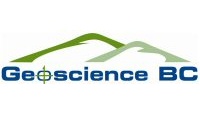Geoscience BC and the Horn River Basin Producers Group have launched several collaborative geoscience projects to identify and map subsurface aquifers in the Horn River Basin (HRB).
While the aquifer study will establish the suitability of water reservoirs to provide for future exploration and development opportunities of shale gas within the Basin, its aim is to reduce the surface footprint of development in the Basin by reducing the use of surface water, minimizing the impact on potable water, and facilitating orderly development through collaborative research and knowledge sharing among geoscience researchers and the members of the Horn River Basin Producers Group.
Phase 1 projects will be supported with approximately $3.5 million in funding from Geoscience BC and over $6 million of in-kind contributions from the Horn River Basin Producers Group.
This project work has been supported by the Province of British Columbia, through a $5.7 million grant from the Ministry of Energy, Mines and Petroleum Resources to Geoscience BC, and by members of the Horn River Basin Producers Group through in-kind and cash contributions.
Phase 1 projects include
1. Compilation and integration of all existing data on potential aquifers in the Basin, with a particular focus on subsurface, non-potable, aquifers.
2. A series of water quality, flow and injection tests from Horn River Basin Producers Group wells throughout the Basin.
3. Pilot project using ground Induced Polarization and resistivity geophysics to test mapping of near surface water channels inferred from 3D seismic and high resolution airborne magnetic data.
In addition, Requests for Proposals will be issued in the near future for:
4. Petrographic characterization of potential aquifer zones in the Horn River Basin, through examination of drill cuttings of high priority aquifer formations from more than 60 wells throughout the Horn River Basin.
5. Hydrogeologic characterization of the Horn River Basin, including an assessment of distribution of reservoir, fluids and potential permeability and transmissivity.









